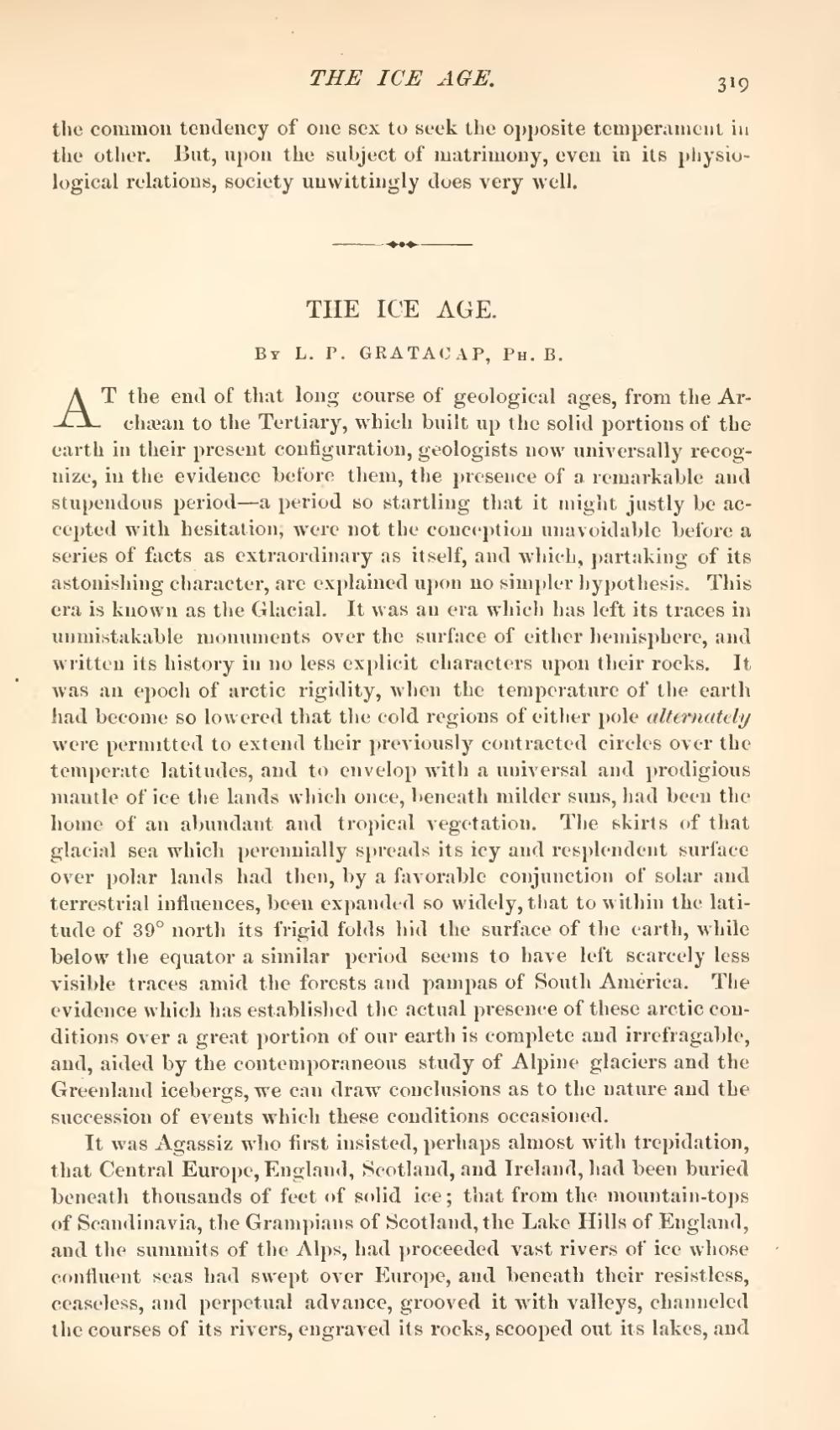the common tendency of one sex to seek the opposite temperament in the other. But, upon the subject of matrimony, even in its physiological relations, society unwittingly does very well.
| THE ICE AGE. |
By L. P. GRATACAP, Ph.B.
AT the end of that long course of geological ages, from the Archæan to the Tertiary, which built up the solid portions of the earth in their present configuration, geologists now universally recognize, in the evidence before them, the presence of a remarkable and stupendous period—a period so startling that it might justly be accepted with hesitation; were not the conception unavoidable before a series of facts as extraordinary as itself, and which, partaking of its astonishing character, are explained upon no simpler hypothesis. This era is known as the Glacial. It was an era which has left its traces in unmistakable monuments over the surface of either hemisphere, and written its history in no less explicit characters upon their rocks. It was an epoch of arctic rigidity, when the temperature of the earth had become so lowered that the cold regions of either pole alternately were permitted to extend their previously contracted circles over the temperate latitudes, and to envelop with a universal and prodigious mantle of ice the lands which once, beneath milder suns, had been the home of an abundant and tropical vegetation. The skirts of that glacial sea which perennially spreads its icy and resplendent surface over polar lands had then, by a favorable conjunction of solar and terrestrial influences, been expanded so widely, that to within the latitude of 39° north its frigid folds hid the surface of the earth, while below the equator a similar period seems to have left scarcely less visible traces amid the forests and pampas of South America. The evidence which has established the actual presence of these arctic conditions over a great portion of our earth is complete and irrefragable, and, aided by the contemporaneous study of Alpine glaciers and the Greenland icebergs, we can draw conclusions as to the nature and the succession of events which these conditions occasioned.
It was Agassiz who first insisted, perhaps almost with trepidation, that Central Europe, England, Scotland, and Ireland, had been buried beneath thousands of feet of solid ice; that from the mountain-tops of Scandinavia, the Grampians of Scotland, the Lake Hills of England, and the summits of the Alps, had proceeded vast rivers of ice whose confluent seas had swept over Europe, and beneath their resistless, ceaseless, and perpetual advance, grooved it with valleys, channeled the courses of its rivers, engraved its rocks, scooped out its lakes, and
